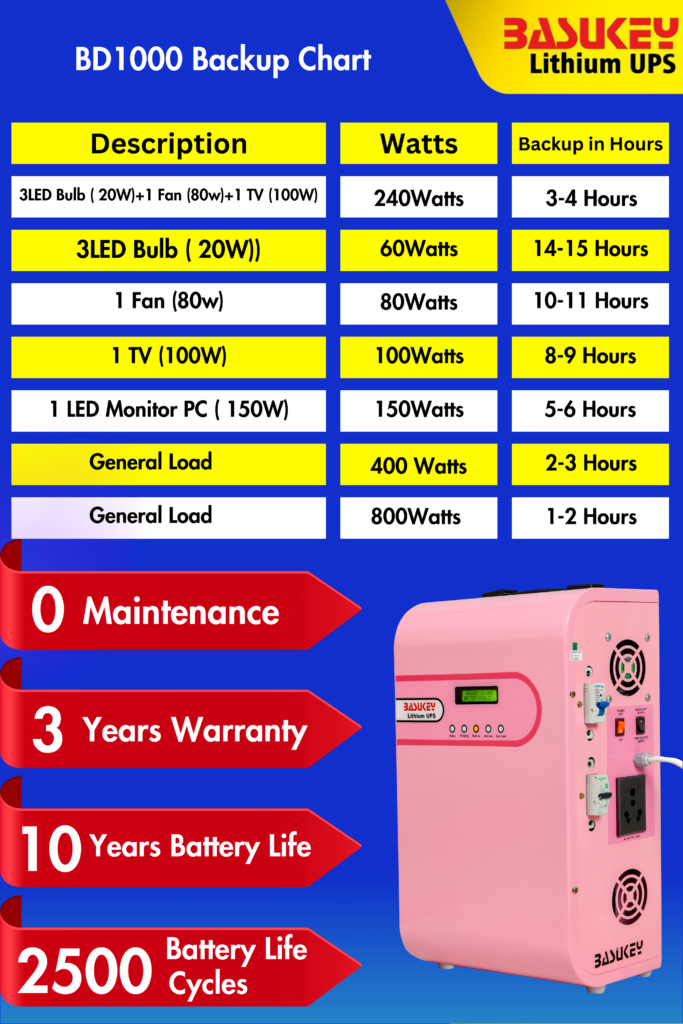The Cost of Downtime: Why Businesses Are Switching to Lithium UPS
The Cost of Downtime: Why Businesses Are Switching to Lithium UPS. In today’s hyper-connected world, even a few seconds of power disruption . Result in lost revenue, damaged equipment, and compromised data integrity. For industries that rely on continuous operations, the cost of downtime isn’t just an inconvenience. It’s a serious financial and operational risk. Businesses are realizing that traditional UPS systems, particularly those relying on lead-acid batteries, are no longer sufficient to meet modern power demands. This has driven a rapid shift toward Lithium UPS solutions. Which offer faster power transitions, longer battery life, and AI-driven energy optimization to minimize risks and ensure seamless continuity.
The Real Cost of Downtime: More Than Just Lost Revenue
When power goes down, the financial impact can be staggering. According to industry studies, unplanned downtime costs businesses:
$5,600 per minute on average for IT and data centers.
$1 million per hour for large-scale manufacturing plants.
$300,000 per hour in healthcare and emergency services.

Beyond direct financial losses, downtime can cause:
– Data corruption and loss, leading to operational delays.
– Equipment malfunctions, requiring costly repairs or replacements.
– Missed transactions, impacting customer trust and brand reputation.
– Compliance violations, resulting in legal penalties or fines.
Why Traditional UPS Systems Fail in High-Stakes Environments
While traditional lead-acid UPS systems have been the go-to solution for years, they come with significant limitations:
i. Slower transition time – Delayed power switching can lead to service disruptions.
ii. Limited lifespan – Frequent battery replacements drive up long-term costs.
iii. Bulky and space-consuming – Difficult to scale in high-density environments.
iv. Energy inefficiencies – Higher heat output increases cooling costs.
Why Businesses Are Switching to Lithium UPS
1. Instantaneous Power Transition: Eliminating Downtime Risks
– Sub-second response times ensure uninterrupted operations.
– Voltage stabilization protects equipment from fluctuations and power surges.
– No micro-outages, preventing data corruption in IT and financial systems.
2. Longer Battery Life & Reduced Maintenance Costs
– 3-5x longer lifespan compared to lead-acid UPS batteries.
– Minimal maintenance requirements, reducing labor costs.
– Consistent performance, even in extreme temperatures.
3. AI-Driven Energy Optimization & Predictive Maintenance
– Smart energy allocation ensures critical systems get priority power.
– Real-time battery health monitoring prevents unexpected failures.
– Load balancing capabilities, reducing energy waste and optimizing costs.
4. Faster Recharge Cycles & Greater Energy Efficiency
– Ultra-fast charging, minimizing vulnerability between outages.
– Higher depth of discharge (DoD) allows more usable energy per cycle.
– Lower heat output, reducing cooling costs in data centers and industrial sites.
5. Compact & Scalable for Growing Power Demands
– 70% lighter and more compact than lead-acid alternatives.
– Modular design, allowing businesses to scale power backup as needed.
– Ideal for high-density environments, from smart factories to telecom networks.
Industries That Can’t Afford Downtime—and How Lithium UPS Helps
1. Data Centers & Cloud Infrastructure
– Ensures 100% uptime, preventing data loss and service outages.
– Supports high-density server environments with compact energy solutions.
– Reduces operational costs through smart load balancing and cooling efficiency.
2. Healthcare & Emergency Services
– Keeps life-saving equipment operational without power interruptions.
– Prevents voltage fluctuations that could impact medical devices.
– Enables real-time monitoring of hospital energy systems for predictive maintenance.
3. Manufacturing & Industrial Automation
– Ensures uninterrupted robotic and automated production lines.
– Protects heavy machinery from sudden power failures.
– Minimizes downtime, reducing financial losses in production delays.
4. Telecommunications & Financial Services
– Prevents service interruptions in mobile networks and financial transactions.
– Supports cybersecurity infrastructure by maintaining continuous power.
– Reduces reliance on fossil fuel generators, lowering operating costs.
The Future of Power Security: Why Lithium UPS is the New Standard
As businesses face increasing energy challenges—rising power demands, climate-related outages, and the push for sustainability. Switching to Lithium UPS is no longer an option, but a necessity.
I. Unparalleled reliability for mission-critical industries.
II. Lower total cost of ownership (TCO) with extended battery life.
III. AI-driven power optimization for smarter energy management.
IV. Scalability and efficiency, supporting future business growth.
